2024
ES
Chile es un país marcado por desastres socionaturales. Su historia ha sido forjada por numerosos terremotos, inundaciones, erupciones volcánicas e incendios, entre otros fenómenos, que han moldeado su territorio y la identidad de sus poblaciones a lo largo de los siglos. Frente a esta recurrencia, las sociedades afectadas han desarrollado una “cultura del desastre”, compuesta por ideas y prácticas que nos han permitido interpretar y responder, con mayor o menor éxito, a estos eventos.
En la actualidad, la cultura del desastre en Chile está profundamente influenciada por la circulación y uso del concepto de resiliencia, que se ha convertido en omnipresente en las múltiples esferas de la gestión del riesgo. Con origen etimológico en el latín resilire, que significa "saltar de nuevo, saltar de vuelta, rebotar", el término se ha asociado con la capacidad de una persona, sociedad, estructura o ciudad para sobrellevar un evento adverso.
Pero, ¿qué significa realmente ser resiliente? ¿Cómo se alcanza ese estado? Y lo más importante, ¿qué deja fuera este concepto que es fundamental para afrontar los desastres? La exposición "Post-Resiliencia" aborda estas preguntas, adoptando una postura reflexiva para analizar las ideas y prácticas vinculadas al concepto de resiliencia en la academia y la institucionalidad de la gestión del riesgo en Chile. Se reflexiona sobre la recurrencia, la memoria, el aprendizaje, el cambio y las diversas formas técnicas e ideológicas de promover la subsistencia ante la devastación del desastre.
Fernanda López Quilodrán, Ignacio Gutiérrez Crocco y Sebastián Riffo Valdebenito, artistas participantes en esta muestra, realizaron una residencia investigativa y creativa en el Servicio Nacional de Prevención y Respuesta ante Desastres (SENAPRED). De esta experiencia, rescataron elementos de su historia, que cruzaron con las investigaciones del Centro de Investigación para la Gestión Integrada del Riesgo de Desastres (CIGIDEN). El objetivo fue tematizar, exponer y cuestionar diferentes perspectivas sobre la resiliencia frente a los desastres.
EN
Chile is a country marked by socionatural disasters. Its history has been shaped by numerous earthquakes, floods, volcanic eruptions, and fires, among other phenomena, which have molded its territory and the identity of its populations over the centuries. In the face of this recurrence, affected societies have developed a "disaster culture," composed of ideas and practices that have allowed them to interpret and respond, with varying degrees of success, to these events.
Currently, the disaster culture in Chile is deeply influenced by the circulation and use of the concept of resilience, which has become omnipresent in the various spheres of risk management. With etymological origins in the Latin resilire, meaning "to jump back, rebound," the term has been associated with the ability of a person, society, structure, or city to cope with an adverse event.
But what does it really mean to be resilient? How is this state achieved? And most importantly, what does this concept leave out that is fundamental to facing disasters? The exhibition "Post-Resilience" addresses these questions, adopting a reflective stance to analyze the ideas and practices linked to the concept of resilience in academia and the institutional framework of risk management in Chile. It reflects on recurrence, memory, learning, change, and the various technical and ideological ways of promoting survival in the face of disaster devastation.
Fernanda López Quilodrán, Ignacio Gutiérrez Crocco, and Sebastián Riffo Valdebenito, participating artists in this exhibition, conducted an investigative and creative residency at the National Disaster Prevention and Response Service (SENAPRED). From this experience, they retrieved elements of its history, which they intertwined with research from the Center for Integrated Disaster Risk Management Research (CIGIDEN). The goal was to thematize, expose, and question different perspectives on resilience in the face of disasters.
Registro exposición

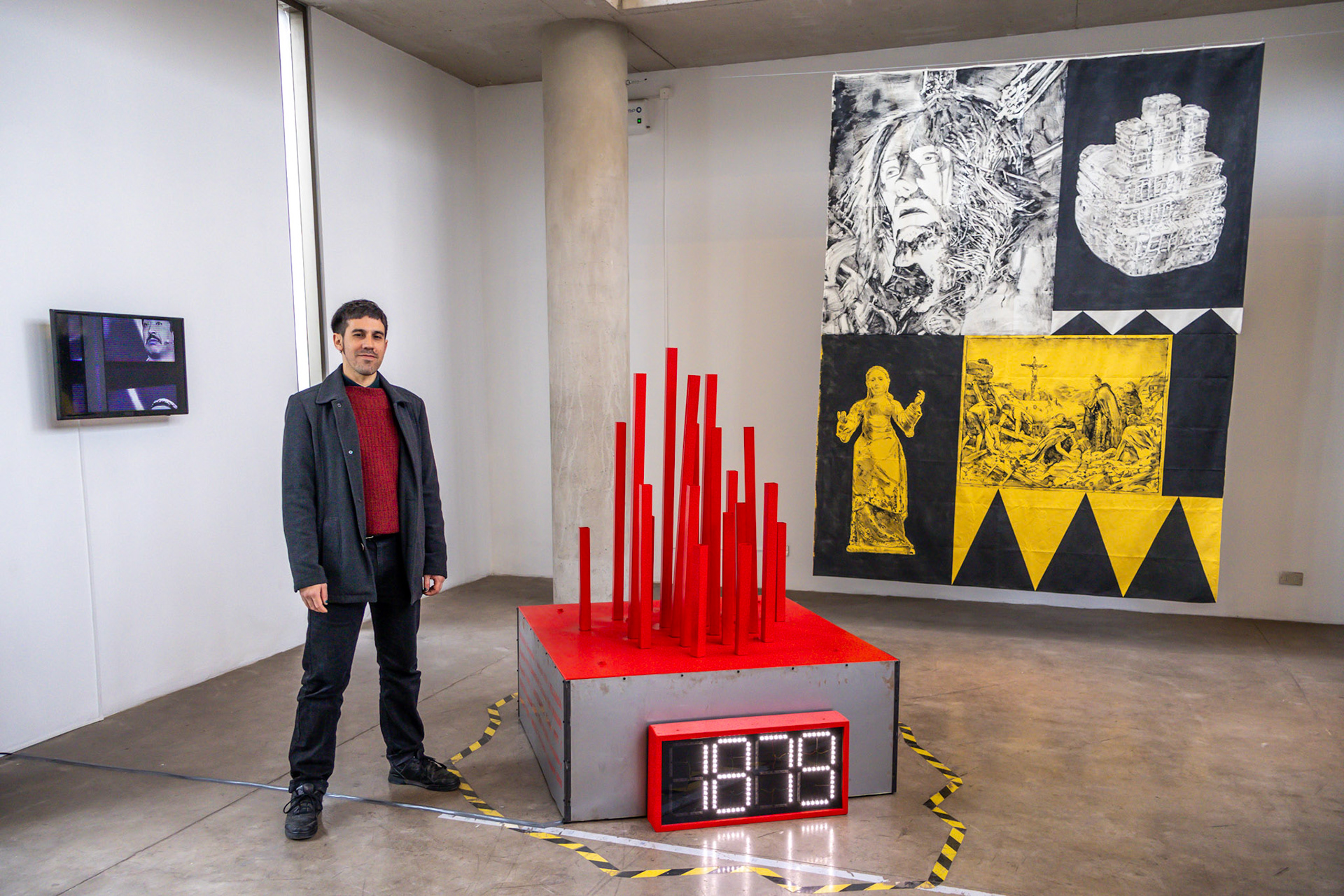
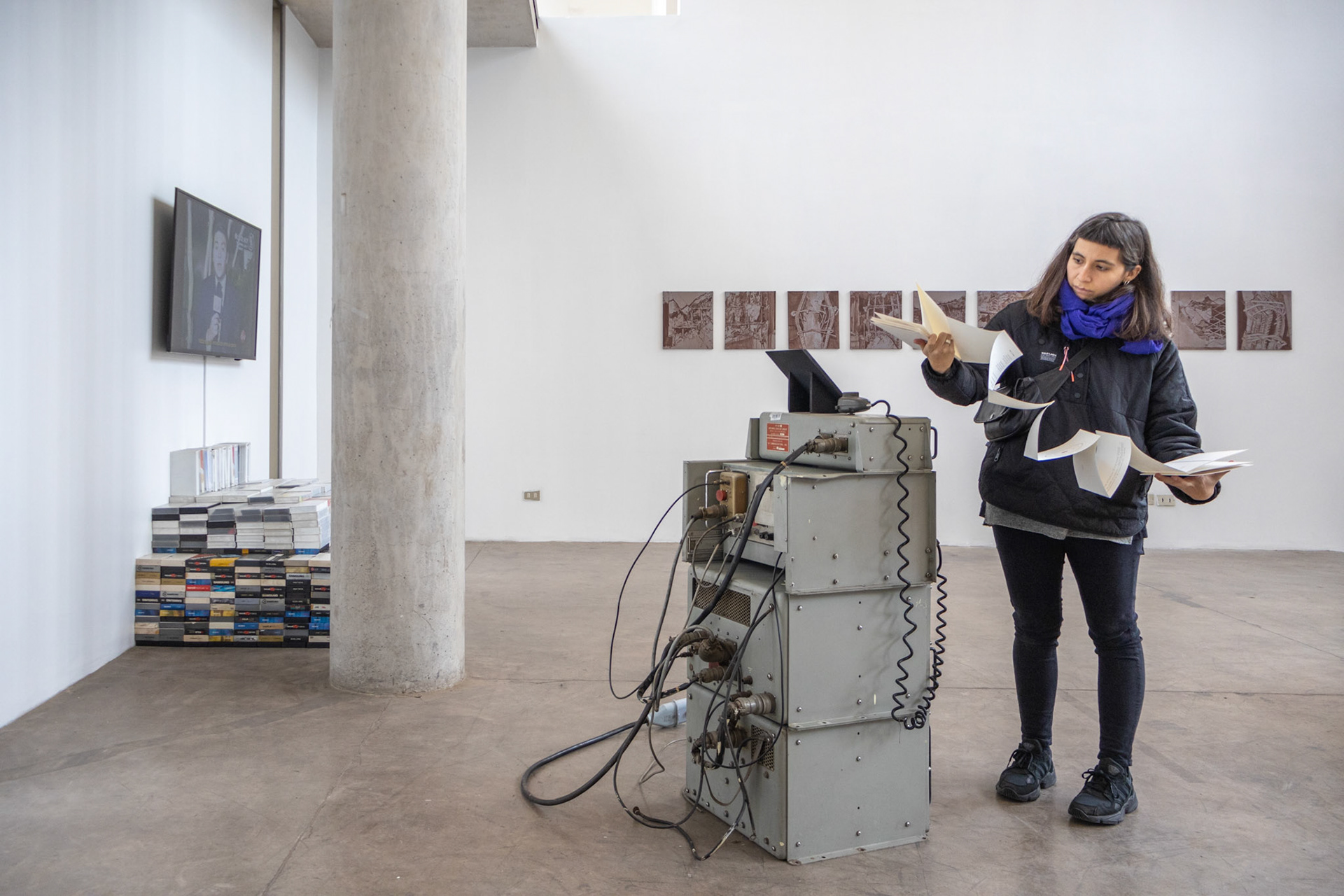
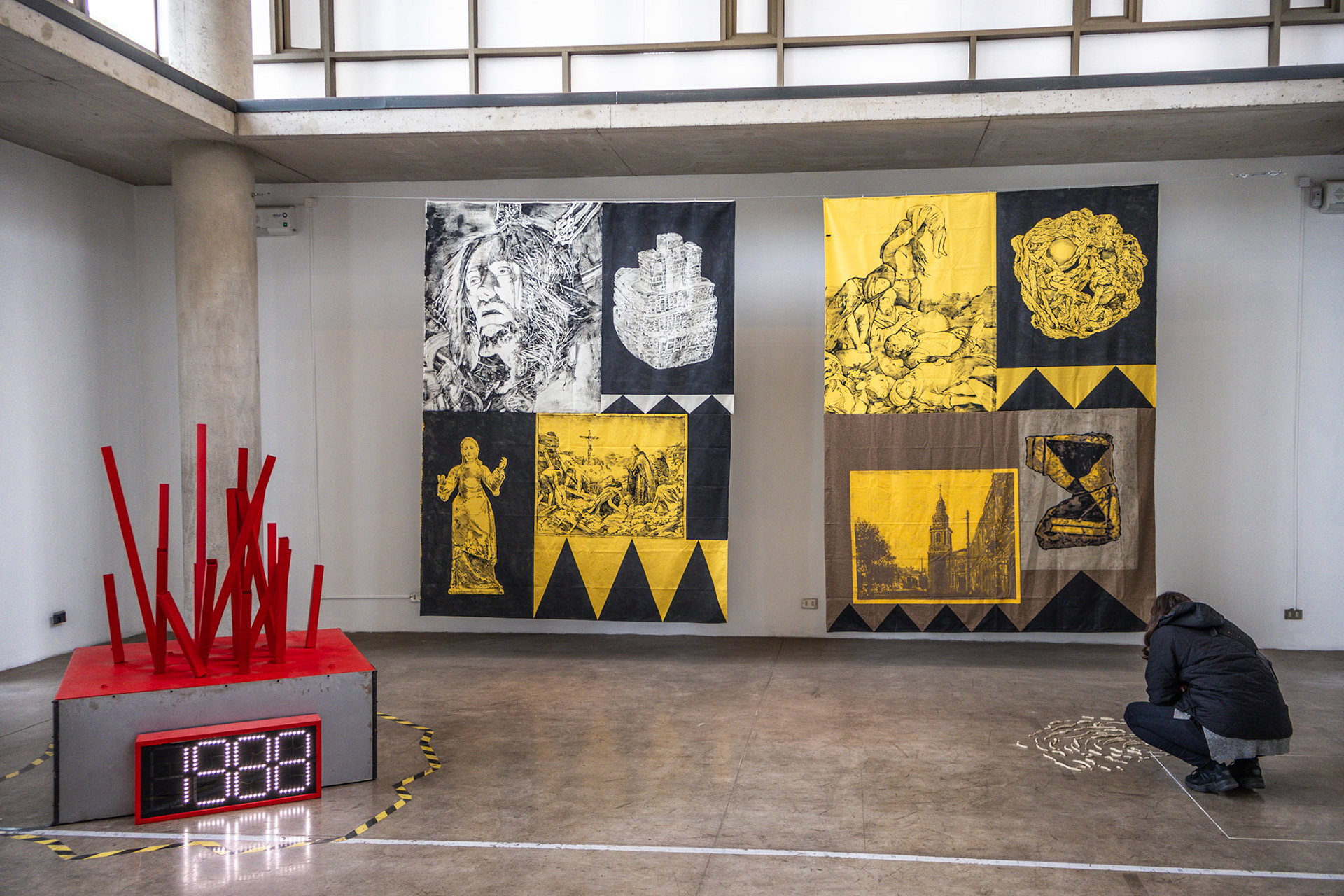
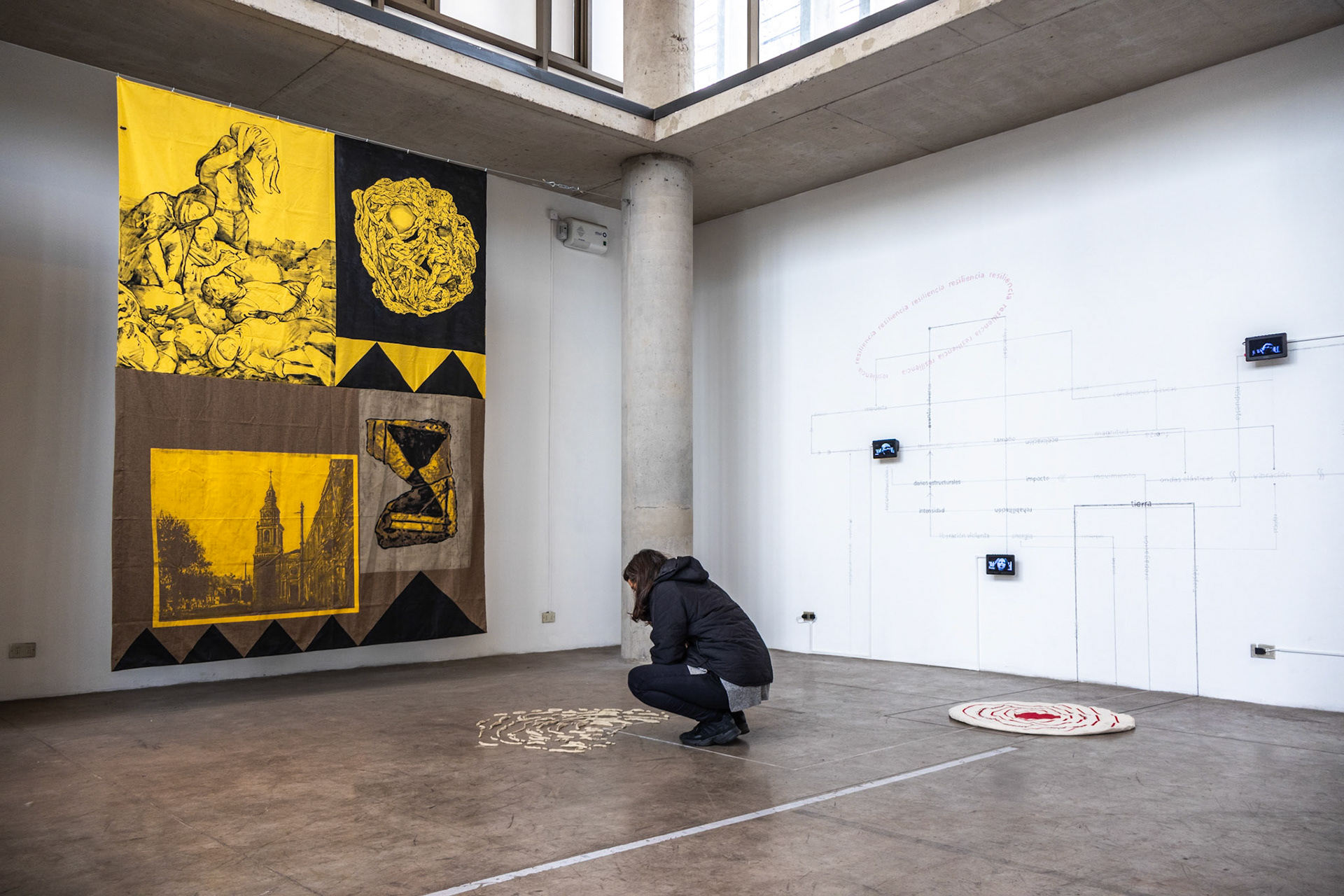
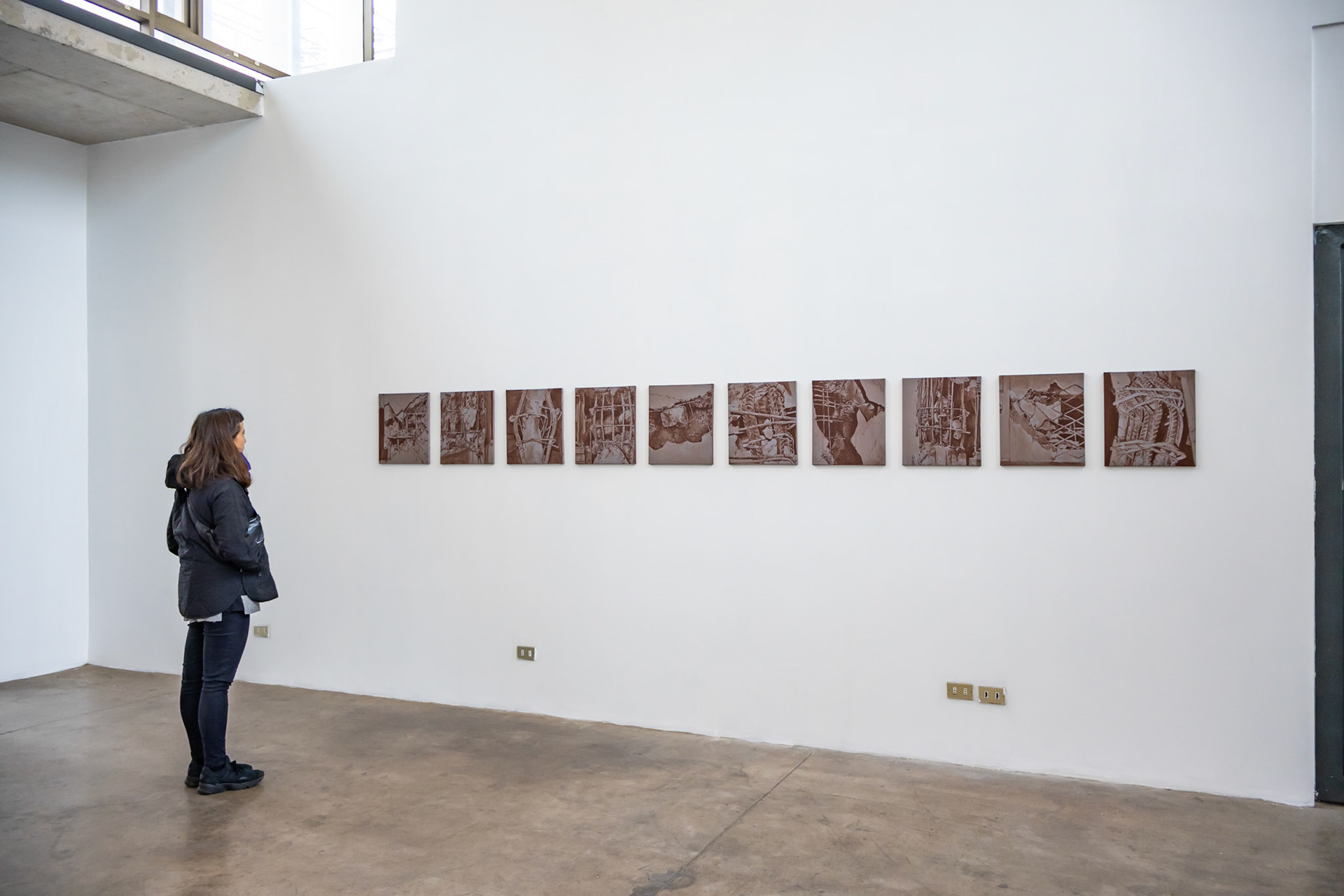

i.-Emblemas telúrico IV (2024)
"Emblemas telúricos IV" (2024) de Sebastián Riffo Valdebenito. Díptico pictórico. Esmalte al agua sobre tela 280 x 200 cm c/u. Fotografía: Sebastián Riffo Valdebenito.
ES
Díptico de gran tamaño titulado “Emblemas telúricos IV” (2024). En esta obra, diversas imágenes de la historia telúrica de Chile conviven entre geometrías y planos de color, abarcando el universo religioso, literario y patrimonial del país. Asimismo, destaca la imagen del Cristo de Mayo, un crucifijo tallado en madera de arte sacro barroco y colonial chileno, que se mantuvo erguido tras el terremoto magno de 1647 que azotó a la Capitanía General de Chile, a pesar de que casi todo a su alrededor se derrumbó. Este evento dio inicio a la tradición popular de procesión pública que se realiza cada 13 de mayo en Santiago de Chile, buscando la protección de los habitantes frente a futuros terremotos y calamidades. Otro detalle que el artista ha decidido representar es la iglesia de San Francisco, arquitectura religiosa católica que también se sostuvo después del terremoto magno, gracias a los cimientos incaicos sobre los cuales fue construida. Asimismo, aparecen referencias a sistemas antisísmicos andinos, particularmente las shicras, usadas por la civilización Caral en Perú hace 5000 años, entre otras referencias telúricas.
EN
In this artwork, various images from Chile's teluric history coexist among geometries and planes of color, encompassing the country's religious, literary, and cultural heritage. Among these references is the image of the Cristo de Mayo, a crucifix carved in Baroque and colonial Chilean sacred wood art, which remained standing after the great earthquake of 1647 that struck the Captaincy General of Chile, despite almost everything around it collapsing. This event initiated the popular tradition of a public procession held every May 13th in Santiago, Chile, seeking protection for the inhabitants from future earthquakes and calamities. Another detail represented by the artist is the San Francisco Church, a Catholic religious architecture that also withstood the great earthquake, thanks to the Incan foundations on which it was built. Additionally, there are references to Andean anti-seismic systems, particularly the shicras, used by the Caral civilization in Peru 5,000 years ago, among other teluric references.
ii.- "Los chilenos se ríen de la desgracia" (2024)
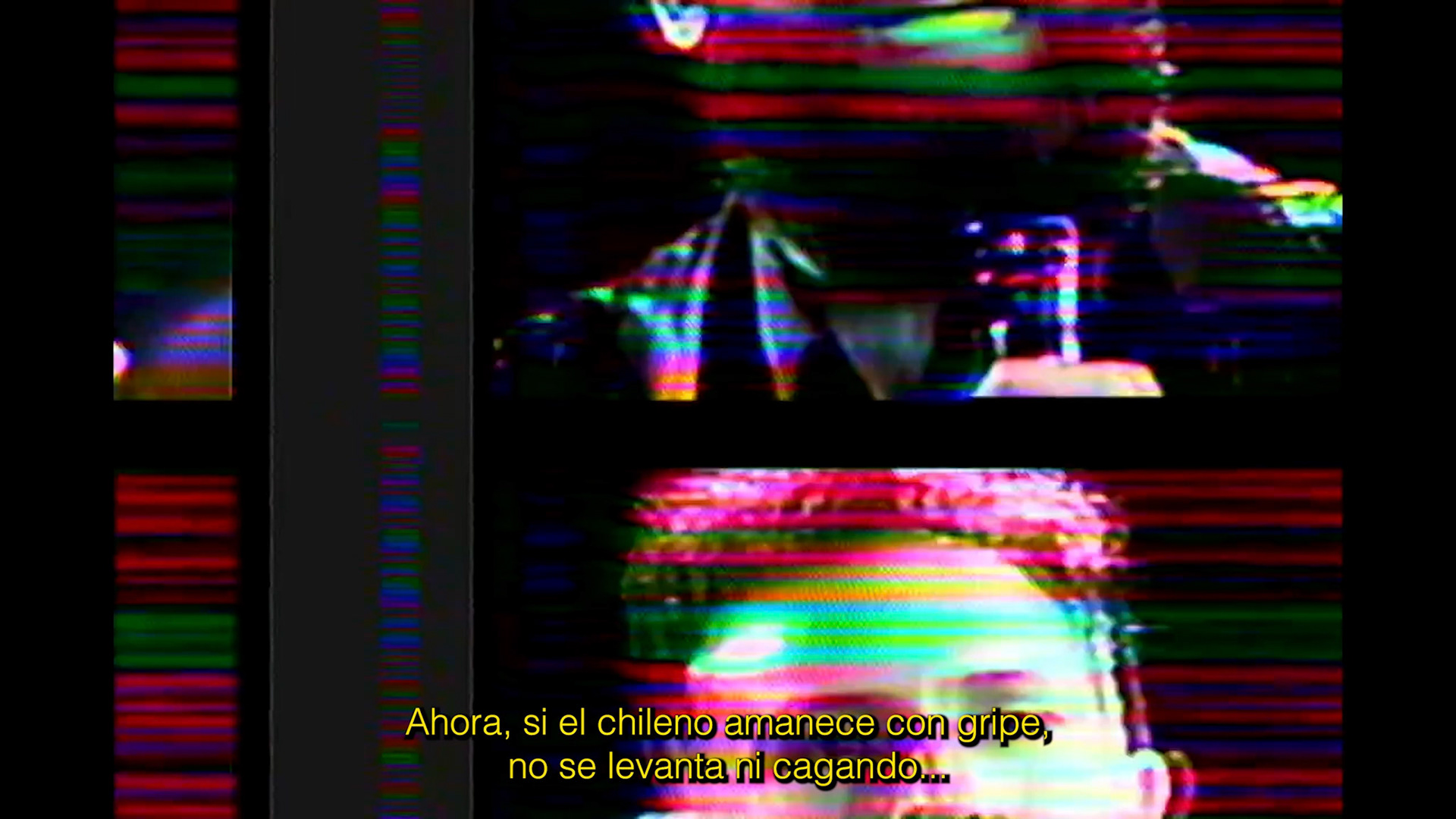


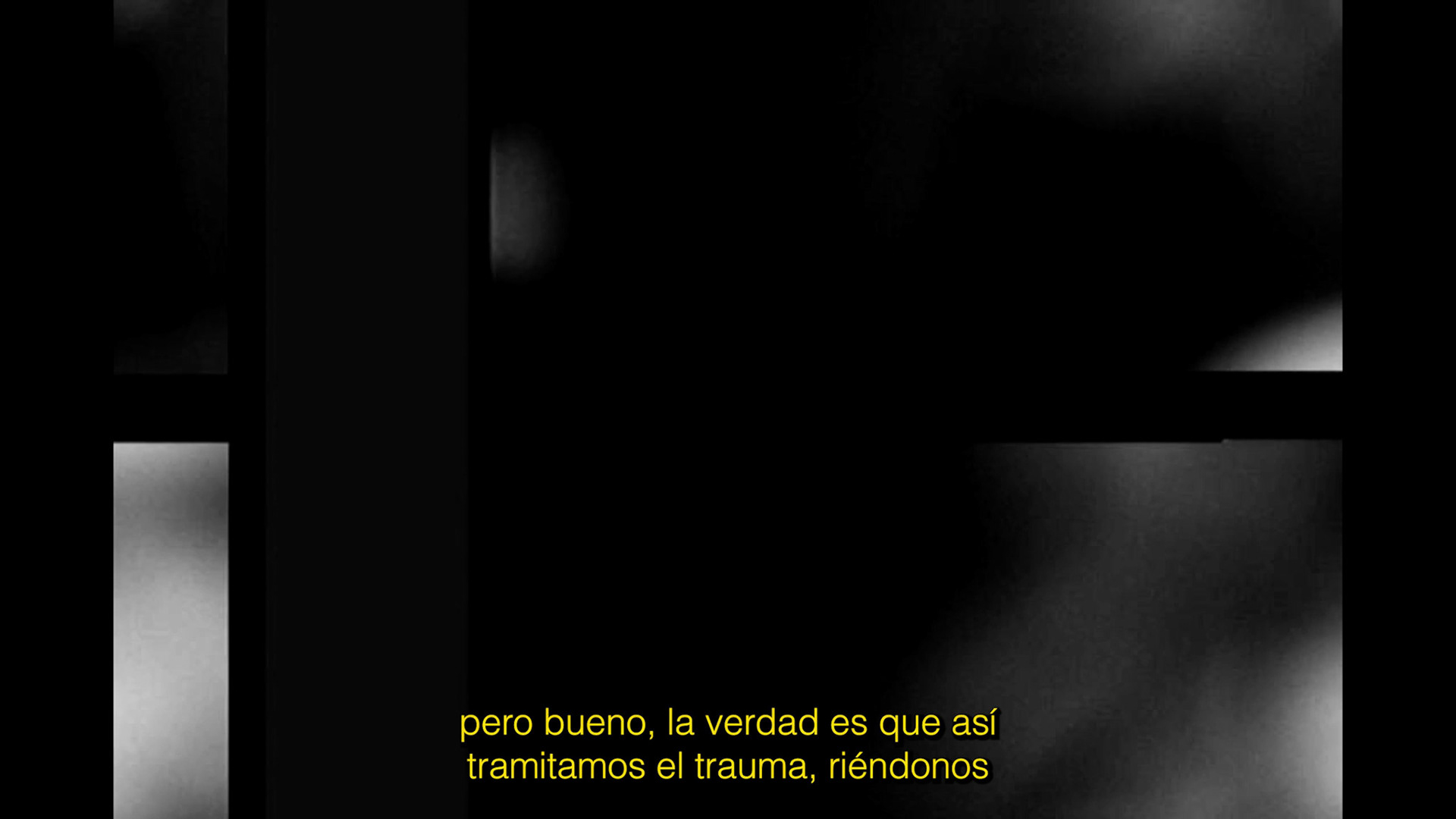
ES
Video que recopila fragmentos de rutinas presentadas por humoristas en distintas ediciones del Festival de Viña y del Festival del Huaso de Olmué, donde el desastre es un tema central de reflexión y sátira. Esta pieza propone una conexión entre la cultura popular y los desastres, explorando la relación entre las personas y su capacidad de resiliencia frente a los eventos telúricos que han experimentado. A través del humor, el artista muestra cómo estos episodios se integran en el relato identitario de la nación, co-construyendo y habitando una cultura del desastre generalizada.
EN
A video that compiles segments of routines presented by comedians at various editions of the Viña del Mar Festival and the Huaso de Olmué Festival, where disaster is a central theme of reflection and satire. This piece proposes a connection between popular culture and disasters, exploring the relationship between people and their resilience in the face of seismic events they have experienced. Through humor, the artist shows how these episodes become part of the nation's identity narrative, co-constructing and inhabiting a widespread culture of disaster.
iii.- "Fallas estructurales" (2023)
ES
Serie de diez pinturas realizadas con esmalte y acrílico, detallando daños observados en muros de hormigón a causa del terremoto de 1985 en Chile.
EN
A series of ten paintings created with enamel and acrylic, detailing damage observed on concrete walls caused by the 1985 earthquake in Chile.